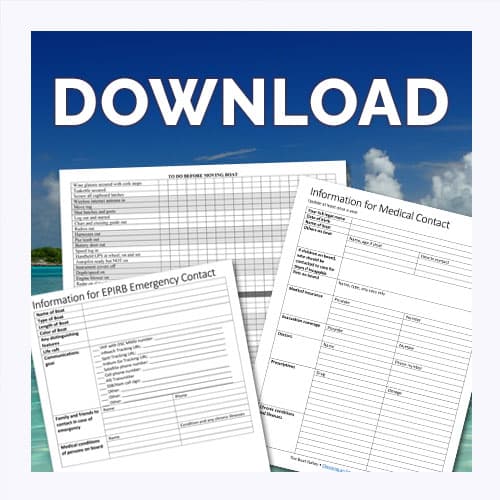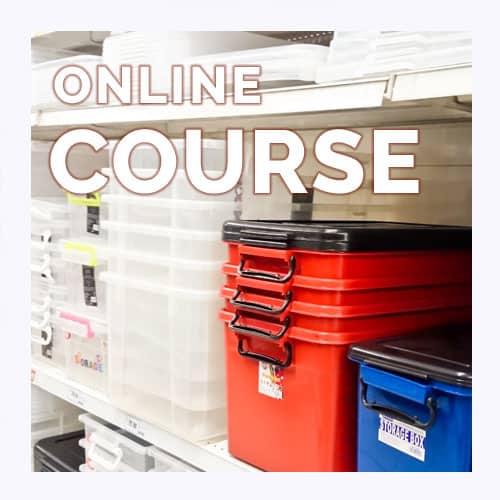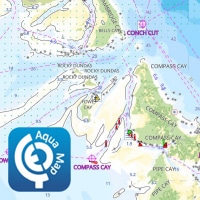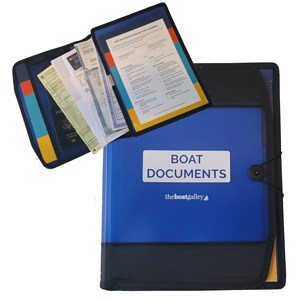When you first start cruising, one of the many decisions to make is what size dinghy outboard engine you need. There is no universal answer! It really depends on what factors are most important to you.
Here are my pros and cons to various sizes. Obviously, these are generalities and a particular motor may have slightly different characteristics (for example, while smaller motors are generally easier to pull-start, a particular motor can be difficult).
And, of course, what size dinghy outboard engine you need will also depend on which dinghy you buy. Take a look at how the dinghy features we needed determined our eventual purchase of our cruising “car.”
Very Small (2.5 to 3.5 HP)
Pros:
- Very lightweight to put on and remove – no need for a crane
- Lightweight on davits
- Sips fuel
- Least expensive to buy
- Very easy to pull start
- Not scary even if full throttle is accidentally given
Cons:
- May not have enough power against strong wind or current
- Tiny passages in carb make it more likely to have a clogged carb
- Very slow if going any distance
- May not have a reverse gear
You choose this size dinghy outboard engine for short trips in protected water. Or where ease of taking it off and putting it on is essential.
Small (4 to 5 HP)
Pros:
- Reasonably lightweight – may be able to put on/off without a crane
- Good fuel efficiency
- Not too expensive
- Reasonably easy to pull start
- Won’t go too fast even if full throttle is given so not scary to new drivers
Cons:
- Will not plane, even with only one person on board
Best for short to medium trips where speed is not an issue.
Medium: (6 to 8 HP)
Pros:
- Reasonable fuel efficiency
- Moderate weight – likely to want an outboard crane
- Most women and kids over 12 can pull start
- May plane with a single person onboard – depends on dinghy, how clean the bottom is, weight of person, and what else is in the dinghy
- Generally enough power to go against wind or current
Cons:
- Very unlikely to plane with two people, or one person and a load
- Since it won’t plane, will actually use more gas on long trips than an outboard that planes unless driven at slow speed
- Can be used to propel mother ship but does not do a good job especially if there is adverse current
All-around good size unless want to be able to plane or have it as a backup to propel the main boat.
Awkward Size (9.9 HP)
A 9.8/9.9/10 HP is generally the same weight as a 15 HP, requires a similar pull to start it, and won’t use much less fuel. However, it’s right on the borderline of consistently planning two people. At this point, my preference is to go with a 15. NOTE: many places require a license for driving an outboard of 10 HP or greater, hence why there is a 9.9 HP.
Large (15 HP)
Pros:
- Will generally plane two people and a fair number of provisions or other load
- Most women and older kids can pull start if it’s properly maintained (newer models – say less than 10 years old — are generally easier to pull start than older, but it really depends on the individual motor)
- Can propel mothership in an emergency (side tie)
Cons:
- Weight – will need an outboard crane to put on and off and a very sturdy place to store it on a rail for passage
- Not fuel efficient – will burn considerably more fuel at low speeds than smaller outboards
- Some women find them difficult to pull-start
- Some new drivers will find the speed scary if accidentally give full throttle
Very Large (20 HP and up)
Pros:
- Planing larger groups of people or loads
- Speed
- May be able to wake board
- Very good as a backup motor for the main boat
Cons
- Weight – will need extra beefy outboard crane
- Will need a very sturdy place to mount it on passages
- Too heavy for many davits, even just for overnight (non-passage) storage
- Expensive to buy
- Uses a lot of fuel – both an expense and will need to store more gas aboard
- Speed can be scary for new drivers
Best for people who want to go long distances quickly – for snorkeling, spearfishing, or diving – or who want to wakeboard.
Hopefully this will give you some things to think about when you choose what size dinghy outboard engine is best for your cruising “car.”

Carolyn Shearlock has lived aboard full-time for 17 years, splitting her time between a Tayana 37 monohull and a Gemini 105 catamaran. She’s cruised over 14,000 miles, from Pacific Mexico and Central America to Florida and the Bahamas, gaining firsthand experience with the joys and challenges of life on the water.
Through The Boat Galley, Carolyn has helped thousands of people explore, prepare for, and enjoy life afloat. She shares her expertise as an instructor at Cruisers University, in leading boating publications, and through her bestselling book, The Boat Galley Cookbook. She is passionate about helping others embark on their liveaboard journey—making life on the water simpler, safer, and more enjoyable.
Here’s your “Quick Start” to everything you need to know when living on a boat:











Nick says
Very helpful article, thank you! Much appreciated.